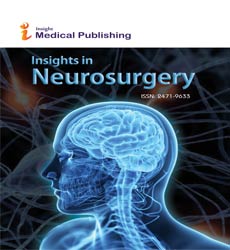Abstract
Cognitive Neuroscience 2020: The efficacy of eaulier rehabilitation therapies in 44 patients with Parkinson's disease - Cheung Chun Luke - Dalian Eaulier Hospital
Aim: To observe the efficacy of Eaulier rehabilitation therapies in treating Parkinson's disease.
Methods: From September 2013 to December 2015, 44 patients with primary Parkinson's disease were treated with Eaulier rehabilitation therapies. The changes in the patients’ symptoms and signs, including resting tremor, stiffness, bradykinesia, postural and gait abnormalities, facial expressions, fine hand movements, insomnia, as well as constipation, were observed, and efficacy of the therapies was evaluated based on the symptoms, signs and Webster ratings. Data obtained were statistically processed. Measurement data was analyzed with t-test and enumeration data with x2-test. If pï¼ÃÆââ¬Å¡Ãâà â 0.05, there are significant differences.
Keywords: Eaulier, rehabilitation, rehabilitation hospital, Parkinson's disease, micro-current, low- and intermediate- frequency current
Results:After treatment, the patients’ symptoms and signs, including resting tremor, stiffness, bradykinesia, postural and gait abnormalities, dull facial expressions, inflexible fine hand movements, insomnia, as well as constipation, have all shown rather remarkable improvement. Their ADL levels have increased significantly, standing at 71.76±8.13 before and 90.97± 9.57 after treatment (pï¼ÃÆââ¬Å¡Ãâà â0.01). Mini-Mental State Examination (MMSE) results were 26.84±2.22 before and 27.66±1.23 after treatment (pï¼ÃÆââ¬Å¡Ãâà â0.05). Webster’s evaluation results were 13.85±4.76 before and 7.89 ±2.31 after treatment (pï¼ÃÆââ¬Å¡Ãâà â0.01). Hamilton Anxiety Rating Scale was 51.99±7.37 before and 50.75±7.68 after treatment (pï¼ÃÆââ¬Å¡Ãâà ¾0.05). Symptoms and signs such as dull facial expressions, inflexible fine hand movements, insomnia and constipation have all shown rather remarkable improvement.
Parkinson’s disease (PD) is a common, chronic, slowly progressing and insidious degenerative disease of the nervous system. It usually occurs among the middle-aged and the elderly, especially those aged above 65. The prevalence rate of PD in people aged above 65 is 1.7%. PD is also the fourth most common neurodegenerative disease among the elderly, leading to symptoms such as resting tremor, stiffness, bradykinesia, as well as postural and gait abnormalities. The disease progresses gradually, seriously affecting the quality of life of the patients and bringing about a heavy burden to their families and society. Currently, there are no significantly effective therapies for PD. Levodopa, Sifrol, Artane and Amantadine are usually used to treat the disease, but their effectiveness is uneven. Moreover, they become less effective after long-term usage and may cause motor fluctuations, abnormal actions, illusion, schizophrenia and other serious side effects. The Eaulier rehabilitation therapies we have used to treat 44 PD patients have led to rather significant improvements. The treatment results are reported below.
Conclusion: Eaulier rehabilitation therapies have good efficacy in treating Parkinson's disease. They don’t cause any side effects, are simple to administer and are worth promoting.
Discussion: PD is a common chronic nervous system disease that usually occurs among the middle-aged and the elderly especially among the age group above 65, where the prevalence rate of PD is as high as 1.7%. PD is also the fourth most common neurodegenerative disease among the elderly. The major symptoms are resting tremor, stiffness, bradykinesia, as well as postural and gait abnormalities. The disease comes on insidiously and progresses gradually, usually becoming more and more severe and seriously affecting the quality of life of the patients, bringing about a heavy burden to their families and society. The treatment of PD has always been widely recognized in the world’s medical circle as a difficult problem, and currently, there is no significantly effective cure for the disease. L- Dopa and dopamine receptor agonist are usually used in clinical treatment of PD, but their effectiveness is uneven. Moreover, these drugs become less effective after long- term use and may bring about grave side effects such as motor fluctuations, abnormal actions, illusion and schizophrenia.
Using Eaulier rehabilitation therapies, we have achieved relatively significant efficacy in the treatment of PD. After one to three courses of treatment, the clinical symptoms and signs of 44 PD patients -- including resting tremor, muscle stiffness, postural and gait abnormalities, bradykinesia, insomnia, constipation, lower extremity edema, dull facial expressions, drooling, fatigue and micrographia – were all significantly alleviated. In addition, the patients’ muscle tension, ADL, MMSE, Hoffer walking ability classification and Webster score have also improved. The results of this study showed that Eaulier rehabilitation therapies are relatively efficacious in treating PD patients and are worth promoting.
The Eaulier systemic current therapy is a new kind of electrotherapy that applies weak low- and intermediate-frequency current to the human body to help prevent and cure diseases. It integrates the functions of health preservation, disease prevention and treatment. This new micro current therapy has been jointly developed by Japanese and Chinese scientific teams after many years of research, using brand new science and technologies and unique medical design. It is a perfect integration of modern Western electrotherapy and traditional Chinese acupuncture therapy.
https://marmaris.tours
https://getmarmaristour.com
https://dailytourmarmaris.com
https://marmaristourguide.com
https://marmaris.live
https://marmaris.world
https://marmaris.yachts
Author(s):
Cheung Chun Luke
Abstract | PDF
Share this

Google scholar citation report
Citations : 31
Insights in Neurosurgery received 31 citations as per google scholar report
Abstracted/Indexed in
- Google Scholar
- Directory of Research Journal Indexing (DRJI)
- WorldCat
- Secret Search Engine Labs
Open Access Journals
- Aquaculture & Veterinary Science
- Chemistry & Chemical Sciences
- Clinical Sciences
- Engineering
- General Science
- Genetics & Molecular Biology
- Health Care & Nursing
- Immunology & Microbiology
- Materials Science
- Mathematics & Physics
- Medical Sciences
- Neurology & Psychiatry
- Oncology & Cancer Science
- Pharmaceutical Sciences
